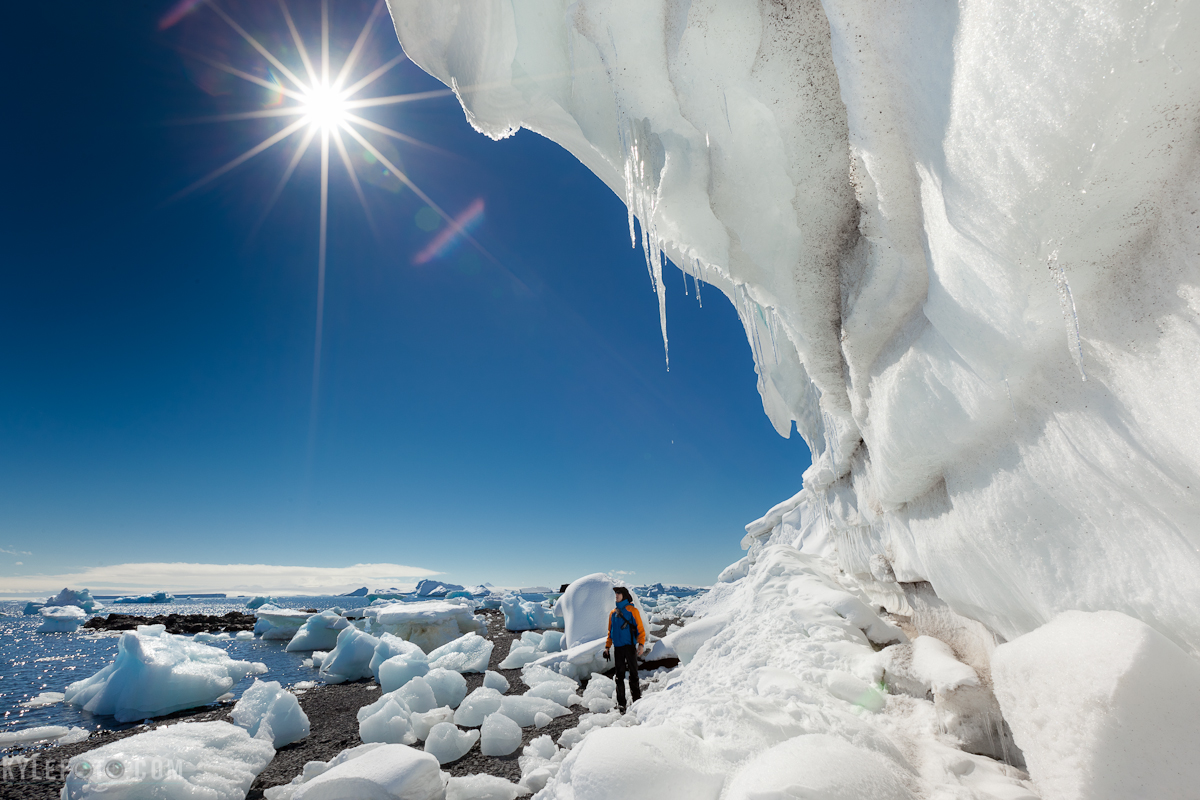Svalbard, Norwegian Arctic, Ship: Akademik Sergey Vavilov Navigating open water is a great experience, but winding through big pans of sea ice, pushing them out of the way and slicing through other chunks is a past time I will never get tired of. Some chunks bounce off the hull making way for us with a thud, while others split right before our eyes with a very satisfying crunch and scraping sound. Thumps and bonks echo throughout the ship while mild tremors wiggle their way through the hull, making me smile as I watch my green tea on the table tremor with excitement. Having no worries about danger with the adept crew in the bridge and the ice strengthened hull I enjoy a day that is full of these little events as this landscape of little icy continents drift past.
Photographic details: Standing up along the wing bridge, I can get a grand view of the ship and the ice below. With an ultra wide 16-35mm lens I can capture a lot in just one view at 16mm. Positioning the bow of the ship as it pokes into the middle of the photo gives it a sense of motion as it travels towards the centre of the image. Having the ship take up less than a quarter of the image helps express the grand view presented in a scene like this. I love seeing the passengers looking out at the ice, they add a human element and help express that travelling in such a desolate looking place doesn’t have to be a lonely affair. I’m not some lone photographer who disappears to the edge of the earth while taking photos in complete isolation to magically appear with great images, I’m a social person and believe me I can’t do what I do completely on my own; everything I do in some part is a team effort.
1/160s f/8.0 ISO100 16mm








